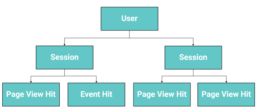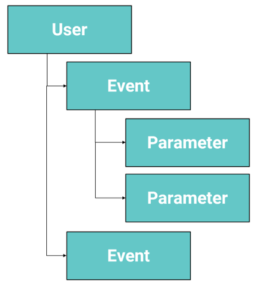In this series, brought to you by FiveStones and our Google Marketing Platform consultants, we explore digital marketing and the GMP from different perspectives of our industry, to provide actionable insights to help you navigate these uncertain times.
With Universal Analytics being released by Google way back in 2012, Google Analytics 4 is the first major update on the platform with a number of key implications for marketers and advertisers. Importantly, with 84% of decision-makers considering cross-platform analytics as “critical” or “very important,” the new Google Analytics 4 launch can help marketers move into the predictive marketing era.
In this article, we’ll take a deep dive into three ways the new Google Analytics 4 can help your analytics strategy, how it addresses growing privacy concerns and where first-party data fits into a post 3rd party cookie world.
What is Google Analytics 4?
Firstly, what is Google Analytics 4? Formerly known as App + Web properties, it is the first major update to Google Analytics tracking since Universal Analytics back in 2012.
Why did Google make these changes? There are three key ways we’ll explore, including how Google Analytics 4 can help your analytics strategy:
1. Simplify, streamline and customise data in Google Analytics
As you can see from the models below, one of the biggest changes within Google Analytics 4 compared to Universal Analytics, is the move to an event focused form of data collection with sessions no longer a core part of how Google Analytics collects or stores data.
Universal Analytics

Google Analytics 4

What does this mean? Marketers can streamline the way they collect their data. Importantly, with this event focused data collection and storage, it is even more crucial for marketers to have a clear naming convention to ensure ease of reporting and analysis.
There are also some features like automated tracking and custom reporting that have previously not been available in the free Google Analytics which are now available, again allowing marketers to streamline their analytics strategy within the platform.
Importantly, one of the major updates is the ability for Google Analytics 4 (free) to integrate with Salesforce Marketing Cloud and Salesforce Sales Cloud reporting, allowing for a more, integrated and consolidated view of the customer. Google Analytics 4 (free) will also allow access to raw hit-level data and daily exports of events to BigQuery which allows for manipulation of the data for marketers who work with data scientists.
2. Changing privacy expectations and requirements
While regulations such as GDPR (Europe) and CCPA (California) may not directly be applicable to Asia/Pacific, these regulatory changes have been a key reason for the rollout of many updates within Google Analytics 4. It’s safe to say that many organisations are putting a higher emphasis on data privacy and rightly so (see research from Forrester above) with some global organisations rolling out consolidated privacy-safe solutions across all their markets to ensure consistency and best practice regardless of whether they are directly impacted by recent regulation changes.
“64% of executives surveyed by Forrester say their companies are expanding their privacy and data-management controls”
Even for those organisations in the region that aren’t within the jurisdiction of these new regulations, it’s important to acknowledge that these updates have brought specific issues in other markets. As we’ve mentioned earlier, these regulatory updates are widely considered the standard globally and other markets could easily follow suit and implement similar regulatory updates themselves. Smart organisations are preparing for this and addressing the growing privacy concerns of consumers now. With the time required to plan, implement and engrain new privacy capabilities within an organisation, even before any potential new regulations coming in, organisations can put in place privacy regulations that are in line with consumer expectations.
Importantly, according to Forbes, 92% of consumers say companies must be proactive about data protection with further research from the Harvard Business Review identifying 90% of consumers believing that the ways their data is treated reflects how they are treated as customers. What this actually means is that this is impacting all organisations big and small, and leaders need to be proactive in how they are managing privacy and data.
3. Shifting to first-party data with the deprecation of 3rd party cookies
Has your organisation planned or implemented a solution for the post 3rd party cookie world? Particularly with Apple’s recent Safari 14 update in September, more and more marketers and advertisers are pivoting towards the use of first-party data as we move closer to a (3rd party) cookieless world.
As part of their Digital Marketing Maturity research, Google and the Boston Consulting Group released a new report in mid-2020 about the importance of using first-party data as well as how organisations can collect and activate this first-party data. With 55.2% of all websites globally using Google Analytics, Google Analytics 4 should be considered a key hub for marketers and advertisers in the cookieless world to build your first-party data. With 3rd party cookies already blocked on Safari and Firefox and pending deprecation on Chrome in 2021, leveraging the simplicity and customisation of the new Google Analytics 4 is crucial to ensure your data strategy is future-proofed.
Importantly, for enterprises and organisations using advanced cloud solutions, BigQuery and Ads Data Hub (a Google-owned BigQuery project), marketers and advertisers can work with data scientists to join first-party data from their Ad Tech (Campaign Manager 360 (CM360), Display & Video 360 (DV360) & Search Ads 360 (SA360)) to first-party data from Google Analytics 360 (GA360) across web and app, allowing for a privacy-safe view of their customers across the customer journey. As we mentioned earlier, even in the free version of Google Analytics 4, there is a BigQuery daily export allowance of up to 1 million events.
Not sure where to start? Get in touch with an analytics consultancy like FiveStones to discuss your requirements and build out a detailed measurement plan to grow and develop your first-party data over the coming years.
Create or connect to a Google Analytics 4 property
1. Sign in to Analytics.
2. Click Admin.
3. In the Account column, select the account you want to create the property for. (If you only have one Google Analytics account, it will be automatically selected but if you have more than one, make sure the account you want is selected)
4. In the Property column, select the desired Universal Analytics property.
5. Click Upgrade to GA4.
You’ll now have the option to either: create a new Google Analytics 4 property or connect to an existing one.
To create a new property
1. Under “I need to create a new Google Analytics 4 property”, click Get Started.
2. If your site uses the global site tag (gtag.js), you’ll have the option to enable data collection using your existing tags. Note: If you’ve implemented any custom tags for your Universal Analytics property, this option won’t replicate the functionality for your Google Analytics 4 property.
3. Click Create Property
To connect to an existing property
1. Under “I want to connect to an existing Google Analytics 4 property”, select the Google Analytics 4 property you want to connect to.
2. Click Connect Properties. Analytics creates the connection between your Universal Analytics and GA4 properties.
Click See your GA4 property and you will be taken to Setup Assistant in your new Google Analytics 4 property. There, you can see the available options for implementing tagging and migrating configuration settings.
Conclusion
In conclusion, the updates within the new Google Analytics 4 reflect the changing privacy expectations and requirements of the market with first-party data becoming more and more important in driving analytics capabilities. This has been made easier through the simplification and streamlining of the data collection process.
For more information on Google Analytics 4 and how you can leverage GA4 to develop your analytics strategy, get in touch with the FiveStones team for more or to book a Google Analytics training session. Follow on for part 2 where we explore the top applications of the new Google Analytics 4.
Stay tuned for additional insights from our Data-driven Marketing in Uncertain Times series including step-by-step guides, deep-dives, practitioner tips and useful information. Feel free to contact the FiveStones team anytime to chat about the Google Marketing Platform and our services.

